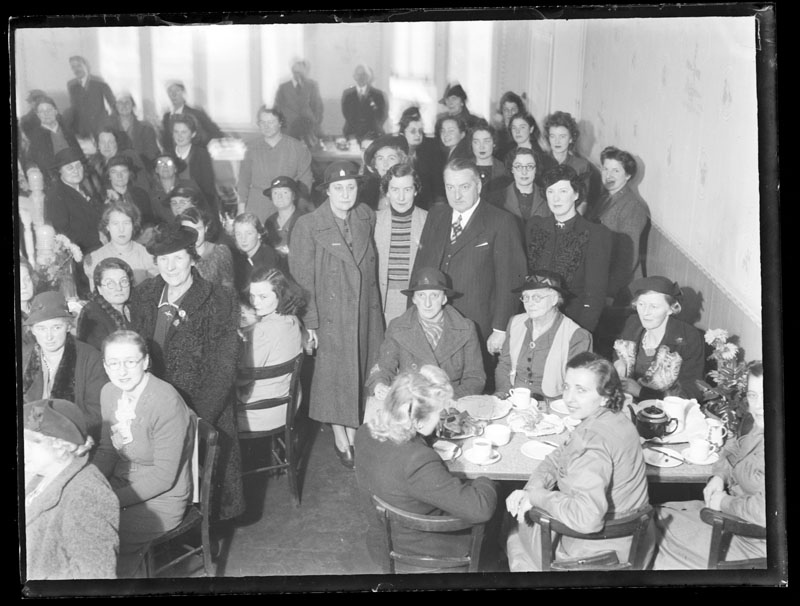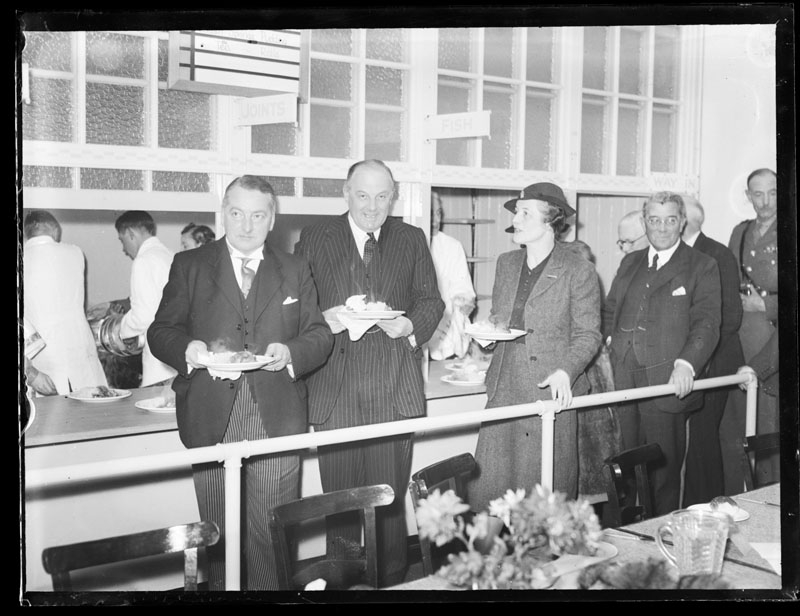Local historian and author, Mike Cooper, has researched the events of 10 February 1943, when the centre of Reading was bombed with the loss of 41 lives, injury to many more and the destruction of a number of buildings.
On Saturday 10 February 2018, the Mayor of Reading, Cllr Rose Williams, will be laying a wreath at Town Hall Square to mark the 75th anniversary of this dark day in Reading’s history. All are welcome to join in paying respects at 3.30pm in Town Hall Square.
The Day Reading Was Bombed
Mike Cooper, Local historian and author
2018 marks the seventy-fifth anniversary of the only fatal air raid on Reading during the Second World War.
At tea-time on Wednesday 10 February 1943, a single Dornier bomber dropped four bombs across the centre of town. One demolished the building in Market Arcade on Friar Street housing the popular British Restaurant, the People’s Pantry, killing 29 of the 41 people who perished that day. Had it not been Wednesday, an early closing day, then casualties would have been even worse. The raid was one of around 20 air attacks on Reading during the War.
Five years ago, a memorial plaque to all those killed by the raid was unveiled on the wall of Blandy and Blandy’s solicitors, next to St Laurence’s Church. Blandy’s chambers were badly damaged by the impact of the fourth and final bomb to be dropped that day, and you can still see shrapnel marks on the adjacent St Laurence’s church façade.
Both before and since the unveiling of the memorial plaque, I’ve had the opportunity to talk to people who were there and I’ve also had the chance to look at contemporary records.
Two things above all have struck me. First, the events of 10 February 1943 are still of great importance to people in Reading. For example, just before Christmas 2017 the bombing was mentioned in A Winter Haunt, a drama staged in Battle Library. Almost every audience I’ve spoken to has included someone with memories of the day. The ‘Old Reading’ Facebook Group produces many comments and memories each time the raid is mentioned. In early 2017 I helped run a session where children from a Caversham school used contemporary records and maps to plot the fall of bombs in air raids on their area.
The People’s Pantry bombing raid has become part of Reading’s sense of its own history. This has led to some urban myths growing up about it, but also to a keen and abiding interest in the past and in the life of Reading during the war.
Second, I’ve seen what the preparations for being bombed can say about how the town faced a global, total war. Reading Town Corporation was responsible for Civil Defence, and from 1939 was running a network of fire services, casualty stations, rest areas, information points and feeding centres. At peak over 200 people were employed full or part-time in ensuring that if Reading was ever attacked, lives would be saved and damage made good.
The People’s Pantry was part of this network. Opened in December 1940, it had a key role in the defence of the town against what was perhaps the most draining threat of all – the threat to food supplies. Very early on in the war it was realised that any major air attack would leave people homeless and in need of food and that the daily ration could be made to go further if supplemented by cheap but nourishing meals provided by the state.
As one of these British Restaurants, this was the People’s Pantry’s day-to-day role. It was equipped to seat 100 people, serving hot meals during the day as well as being widely remembered as somewhere to go for tea. It was staffed by the Women’s Voluntary Service (WVS). From news coverage of the time they appear to be running almost anything that was not being done by the official services; housing evacuees, making bandages, serving tea and sandwiches to workers after air raids. A WVS bicycle mounted tea cart was spotted on the scene of the 1943 bombing raid within half an hour!
It’s ironic that the People’s Pantry was the scene of loss of life that Wednesday precisely because it was doing its job. Whereas other cafes and restaurants were closed, the WVS staff were keeping it open when the third of four 500kg bombs exploded in a yard just to the rear of the building. Two of the building’s floors were collapsed into the basement. The future Paddington Bear author, Michael Bond, only escaped as the bomb left the attic in the same building where he was working for the BBC comparatively intact. The other three bombs dropped either side of Minster Street and outside the Town Hall.
In a filmed oral history interview for the Museum, Paddington Bear author, Michael Bond, recalled the moment bombs dropped on Reading
Although disrupted, Reading’s Civil Defence structures took effect at once. Rescue workers and first- aid teams were on hand in minutes. Even communicating the sad news of casualties and providing for the dead was part of a planned response.
This is perhaps the most lasting impression I’ve taken away from thinking and writing about Reading in the Second World War: Like it or not, the town was grimly prepared for attack. The realities of dealing with bombing, of tackling food shortages were a factor in hundreds, maybe thousands of lives.

A birthday tea was held to mark the first anniversary of the People's Pantry in Market Arcade on 11 December 1941. Congratulatory telegrams were read out by the Mayor, Councillor W.E.C. McIlroy (museum no. 1980.36.A501.3)
Join Mike Cooper at 2pm at Reading Museum on Saturday 10 February to hear more in his illustrated talk. Places are limited. Please follow this link for more details. http://www.readingmuseum.org.uk/whats-on/talks-two-early-closing-day-day-reading-was-bombed
Mike's book 'Early Day Closing: Air Raids on Reading 1939-1945' is available at the Museum shop or our online shopping site.

The opening of the People's Pantry, December 1940. Councillor W.E.C. McIlroy on the left (museum no. 1980.36.A448.5)





